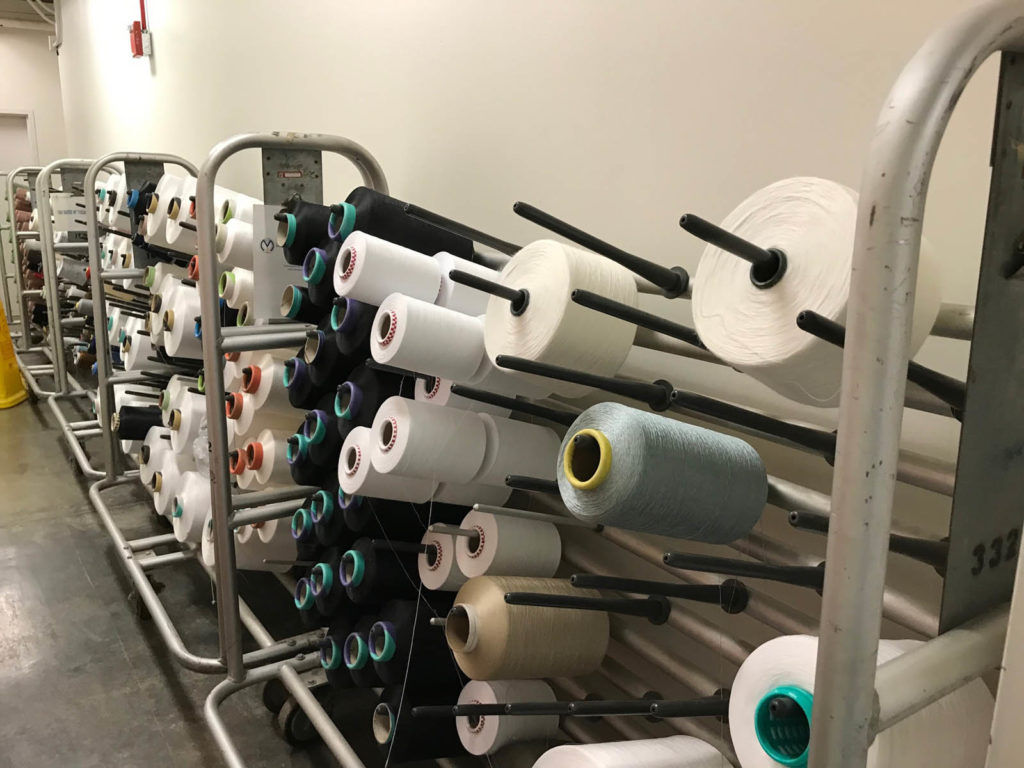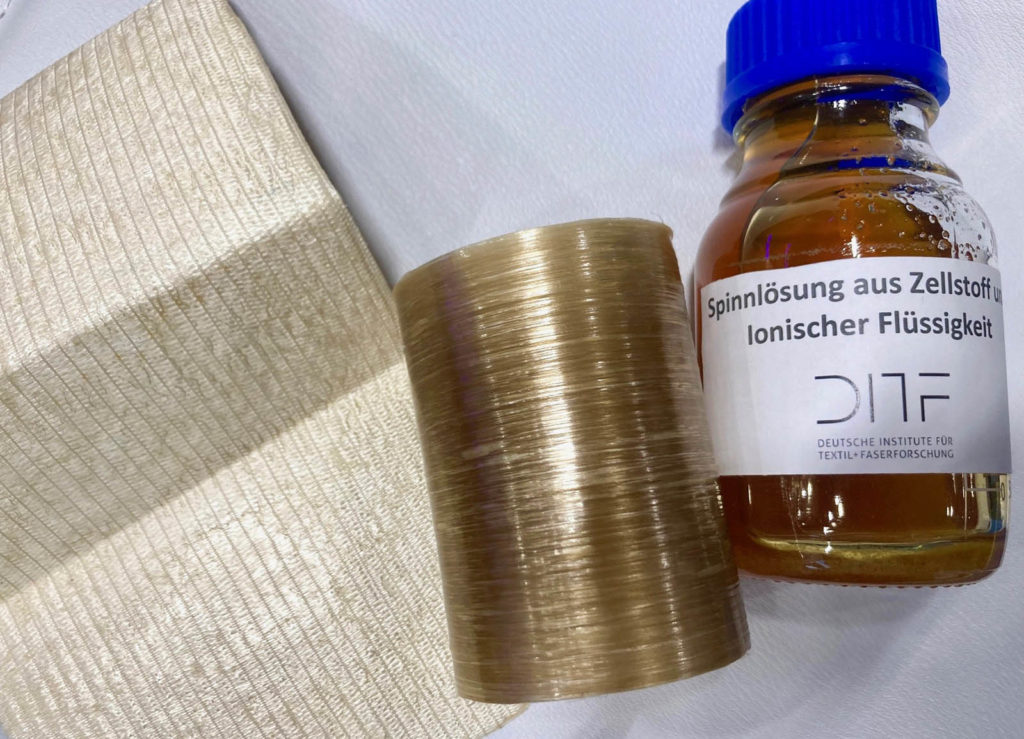
Will 2023 be the year that heralds a deglobalized, but more highly networked, textile industry? If so, what might that look like? One may look at this topic through four different lenses, starting with the supply chain, then robotics in manufacturing, 3D printing and the scalability of biotechnology. All have been hot topics over the past year, but are they here to stay, and what do they mean for the industry?
Supply chain
While much has been written about supply chain disruption in the past year, a rephrasing of the question around its complexity may offer more insights. Consider this: Apple has 180 direct suppliers, while the Spanish apparel brand Mango has 408, according to the Financial Times, Dec. 10, 2022. CEO at Mango Toni Ruiz is looking at how global sourcing might be made more local. The idea of a geographically local supply chain has appeal that stretches from the balance sheet to sustainability and community.
Although there are some great examples of textile clusters, this is not going to be possible or even desirable for every manufacturer. The connected network allows for reach that is both local and distant, remote and clustered. There is a growing move towards establishing a network that is geographically close, or at least on the same land mass. Cost is always a major driver, but according to manufacturers queried over the past year, trust has emerged as a key factor, reflecting on IP protection and reliability, in particular.
Author of Who Can You Trust? Rachel Botsman talks about a horizontal or distributed trust. Botsman defines trust as “a confident relationship to the unknown.” This is what gives us the capacity to deal with uncertainty, including putting our faith in new business partners and supply chains. Those establishing fresh supply chains are going beyond finding the lowest price and are considering trustworthiness and reliability. For this reason, supply chains are taking longer to establish.
The question of trust extends beyond the textile industry to government policy. European manufacturers already under pressure because of escalating energy bills are greatly concerned by the Biden administration’s $369 billion Inflation Reduction Act (IRA), discussed in an article published here in December. Overall imports to Europe increased by 35 percent in 2022, with calls by industry for affirmative action to correct what it sees as an unlevel playing field and unfair competition.
A weaker European textile industry is not in North America’s best interest as a supply chain or trade partner. Quoted in the Dec. 30, 2022, issue of Financial Times, Valadis Dombrovskis, the EU trade commissioner, warns that an unintended consequence of the IRA could make Europe more receptive to China and in fact go to work against the stated aims of the U.S. legislation. While seeking to avoid a subsidy race or even a trade war with the U.S., the trade commissioner has indicated more effective targeting of EU subsidies that could impact the textile industry are being considered.
Automation and robotics
The drive towards greater automation and the use of robotics is driving efficiencies, safety and better quality jobs. Davies Warlick, Executive CEO at Parkdale points to a facility that used to employ 2,000 workers but now employs 200 in roles that require greater technology expertise. The bottom line is that without automation, employment for workers would be in jeopardy.
“We’re constantly striving to be more automated in order to be able to compete. I think that’s one of the reasons we’re still here.” Andy Warlick, Chairman and CEO, commented in the documentary Manufacturing in America: Post-globalisation. In the Parkdale factory, automated guided vehicles move the spools of cotton, with a rota working at 100,000 rpm twisting individual fibers into yarn, while sensors trigger a robot to move the cone onto a conveyor belt for packing.
Researchers at RWTH Aachen estimate that handling time in clothing manufacture accounts for 80 percent of production time and around 80 percent of factory costs. Cutting and sewing steps are in addition to this time. In an effort to reshore garment manufacturing, there is considerable interest in the development of robot grippers capable of picking and placing fabric layers.
Advances in artificial intelligence (AI) are being used to help perform some tasks. The Zimmer Group are using AI to help robots deal with wrinkles, for example. The technology is also seen as contributing to the EU Strategy for Sustainable and Circular Textiles, that aims to have all textile products sold in the EU be durable, repairable and recyclable. There is also a proposal to introduce a mandatory Extended Product Responsibility (EPR) for textiles that would further drive the move to reshore.

3D printing
3D printing is offering a blueprint for the scalability of relatively new technologies and doing so in a way that is opening new market opportunities. Orbital Composites and the Southwest Research Institute (SwRI) are exploring in-space Service, Assembly and Manufacturing (ISAM) capabilities with the U.S. Air Force and the U.S. Space Force (USSF). This is under a STTR Phase I contract from SpaceWERX whose Orbital Prime program is working to identify technologies that can help remediate orbital debris.
Sustainability has been a NASA concern and driver of its R&D for many years. By their estimates, there are over 100 million pieces of debris orbiting the Earth. Perhaps more alarming is the relatively small number (27,000) that are trackable by the Dept. of Defense’s global Space Surveillance Network (SSN) sensors. Size is a factor in what cannot be traced with millimeter-sized pieces simply too small to track, but they represent the highest mission-ending risk to robotic spacecraft as they enter low Earth orbit.
Orbital Composites is developing Space Factories capable of manufacturing in space autonomously. The goal is to build large, precise and resilient space infrastructure on-orbit that would otherwise be unfeasible because of cost or technicalities in launching.
In a recent interview, Cole Niesen, CTO, Oribital Composites, described the company’s approach to build the 3D printer around the type of product that they intend to make. This is very involved and by no means a quick fix, but it does open the door to new possibilities and markets.
This does not happen without the market being equally open to new ideas and ways of doing things. The growth and competition between the commercial and government space programs is creating these opportunities and will certainly drive the next era of more sustainable space technologies and manufacturing facilities.
Biotechnology
The biopolymer market was worth an estimated $10.7 billion in 2022 and is expected to rise to $86.7 billion in 2023, according to a report from Prophecy Market Insights. The key drivers here are sustainability and consumer demand. Questions have been raised about scalability, standardization of product, quality control and reliability of supplies.
The most common concern cited by manufacturers in this sector over the past year was access to a reliable source of raw material. Without securing the supply chain it will be difficult for specifiers to commit to their use in products. Advances are being made on each of these, although they are unlikely to be fully resolved this coming year.
The German Research Institute for Textiles and Fibers (DITF) has set up a Competence Center for Biopolymer Materials driven by the desire for sustainability and reducing energy consumption and the use of fossil raw materials. They are concentrating their research and development on new manufacturing processes, such as wet-spinning, and highly effective solvents in the form of ionic liquids (ILs). This approach is directed towards producing biomaterials suited for composites and other technical materials using renewable biopolymers such as cellulose, alginate, keratin and chitin.
Stability will be the key word for the year ahead, from securing supply chains and raw materials to energy prices and trade agreements. Much of this is outside the producer’s control, so that creating points of stability where possible will be more crucial than ever.
Dr. Marie O’Mahony is an industry consultant specializing in smart and advanced textile technology and market trend reports for global clients. She is a regular contributor to Textile Technology Source.
 TEXTILES.ORG
TEXTILES.ORG


